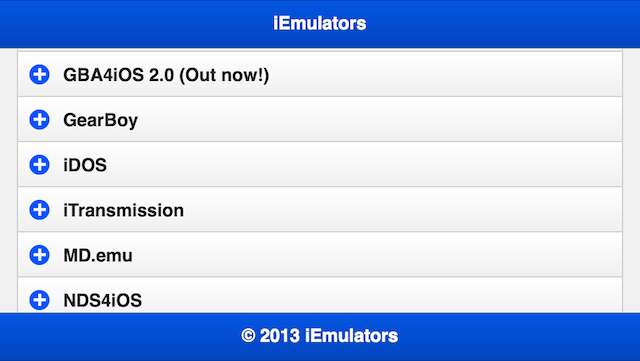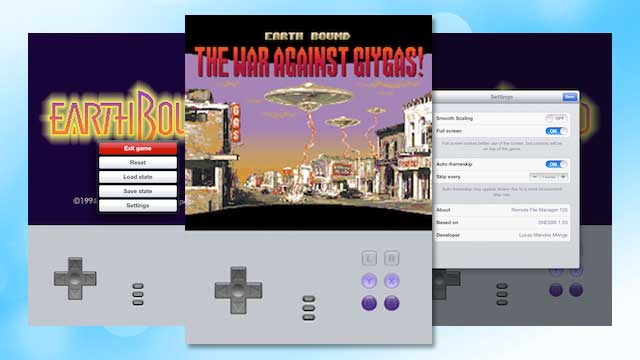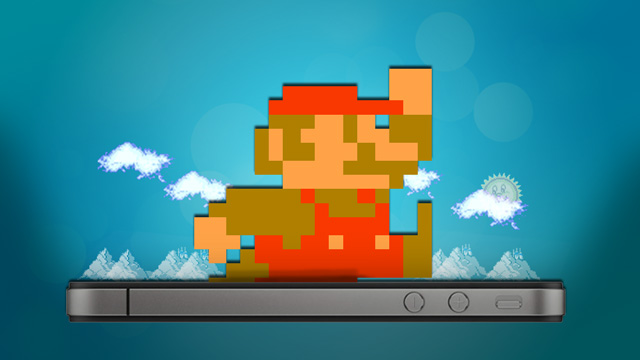Technically speaking, you’re not supposed to be able to install emulators on an iPhone to play classic games. But that doesn’t mean it’s not possible. Here’s how to install emulators on any iOS device, no jailbreak required.
Emulation on iOS devices has been possible for a long time if you’re jailbroken. It’s still the preferable method because it’s easy to install emulators, ROMs and use controllers. That said, not everyone wants to jailbreak. You can still run emulators if you’re willing to do a little work and keep your eyes peeled for rogue apps that make it into the App Store.
Sideloading Emulators From The Web

The trick to get most emulators working with iOS is through a process called sideloading. This is when you install apps from your web browser instead of the official iTunes App Store. In the case of emulators this is usually done by registering the emulator as an enterprise app. Enterprise apps are supposed to be used for private companies to issue apps to their employees, but any developer can make one.
The other route to installing emulators is a bit more complicated and requires that you sign up as a iOS developer and install emulators on your own. For our purposes we’ll stick to emulators you can sideload right from your browser.
We’ve talked about some emulators that you can sideload before. They tend to work fine, but they come with some caveats: there’s no real guarantee of security and they’re often a pain to use. When you sideload an app from the web, you’re installing an unapproved app from an unknown developer. Theoretically, they could include malware. So, just like on Android, you’ll want to install these at your own risk.
The good news is that most emulators are open source and tend to also put their code on GitHub so everyone can make sure they don’t include malware. For example, two of the more recent apps, GBA4iOS (Game Boy Advance/Game Boy) and NDS4iOS (Nintendo DS) have all their code on GitHub.
For other emulators, you need to go through third-party sites, such as iEmulators or Emu4iOS, and install from there, which means you can’t get a good look at the code. These are still usually built on open source software, but it’s harder to know exactly what code you’re installing.
The other problem is that installation of these emulators is a bit tricky. Since they tend to use expired certificates for enterprise accounts, you usually need to change your device’s date to install and use the app. Each emulator requires a different date that you’ll usually find on the emulators web site, but the basic process of installation is pretty much the same across the board:
- Head into Settings > General > Date & Time
- Turn off “Set Automatically”
- Change the date to the year the emulator you want to use suggests (it’s usually 2012)
- Open up the emulator’s web site in mobile Safari
- Install the emulator of your choice
Once you install the emulator, you need to switch the date back every time you want to open the app. It’s cumbersome, but it’s the only way the app will open. If you’re installing from a site like iEmulators, you can only have one emulator installed at a time, so choose wisely.
The Unofficial Apps That Sneak Into The App Store

Every once in a while, an emulator sneaks into the iTunes App Store. These are often hidden away inside other apps, but sometimes they’re pretty blatant and just need workarounds to install games.
These apps usually hide the emulator behind a series of menus so they’re not noticed during Apple’s app review process, but they’re often pulled as soon as they get any press. The general rule of thumb here is to download and install apps with hidden emulators as soon as you can before Apple removes them. To keep up on apps that sneak into the store, forums on sites like TouchArcade or the iOS Gaming Subreddit are good places to start.
Once you get one of those apps, it’s time to back it up. Since Apple will pull it from the App Store, it’s good to back up the emulator so you can install it on future iOS devices. As long as you have a backup in iTunes on your computer you’ll be able to install it on future devices.
If all else fails, at least the occasional web app is powerful enough to run everything from a GameBoy to a Nintendo.

Comments
One response to “The Non-Jailbreakers Guide To Emulation On iOS”
Thanks for the info, I didn’t know their was a NDS one for the iPhone.